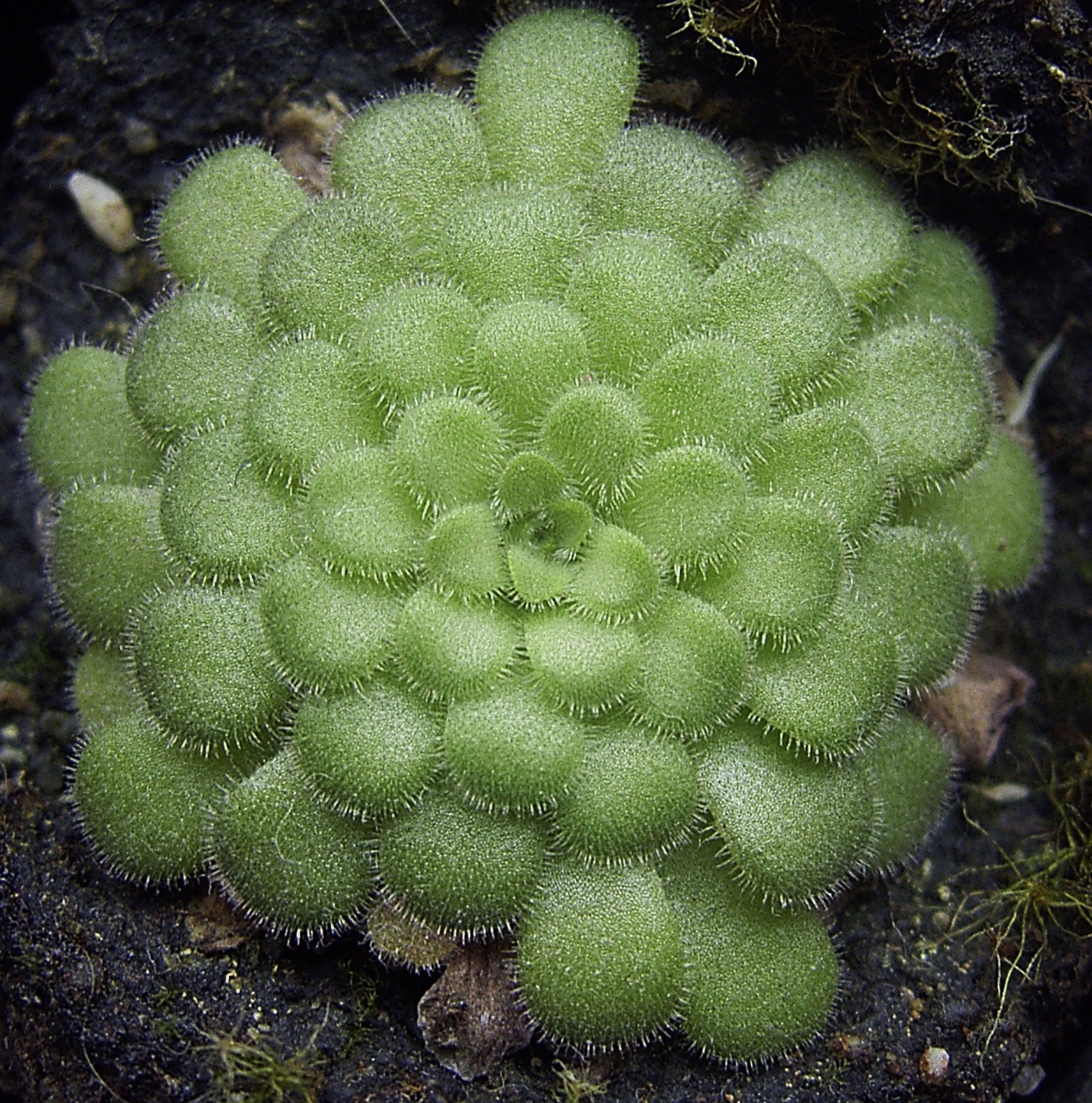|
Lithophyte
Lithophytes are plants that grow in or on rocks. They can be classified as either epilithic (or epipetric) or endolithic; epilithic lithophytes grow on the surfaces of rocks, while endolithic lithophytes grow in the crevices of rocks (and are also referred to as chasmophytes). Lithophytes can also be classified as being either obligate or facultative. Obligate lithophytes grow solely on rocks, while facultative lithophytes will grow partially on a rock and on another substrate simultaneously. Nutrients Lithophytes that grow on land feed off nutrients from rain water and nearby decaying plants, including their own dead tissue. It is easier for Chasmophytes to acquire nutrients because they grow in fissures in rocks where soil or organic matter has accumulated. For most Lithophytes, nitrogen is only available through interactions with the atmosphere. The most readily available form of nitrogen in the atmosphere is the gaseous state of ammonia (NH3). Lithophytes consume atmospheric ... [...More Info...] [...Related Items...] OR: [Wikipedia] [Google] [Baidu] |
Dendrobium
''Dendrobium'' is a genus of mostly epiphytic and lithophytic orchids in the family Orchidaceae. It is a very large genus, containing more than 1,800 species that are found in diverse habitats throughout much of south, east and southeast Asia, including China, Japan, India, the Philippines, Indonesia, Australia, New Guinea, Vietnam and many of the islands of the Pacific. Orchids in this genus have roots that creep over the surface of trees or rocks, rarely having their roots in soil. Up to six leaves develop in a tuft at the tip of a shoot and from one to a large number of flowers are arranged along an unbranched flowering stem. Several attempts have been made to separate ''Dendrobium'' into smaller genera, but most have not been accepted by the World Checklist of Selected Plant Families. Description ''Dendrobium'' species are mostly epiphytic, or lithophytic although a few species are terrestrial. They are sympodial herbs with cylindrical roots usually arising from the ... [...More Info...] [...Related Items...] OR: [Wikipedia] [Google] [Baidu] |
Asarina Procumbens Cascading Down Wall Beside Paxton Church Gatepost
''Asarina'' is a flowering plant genus of only one species, ''Asarina procumbens Mill.'' Search for "Asarina", the trailing snapdragon, which is native to France and Spain and introduced in Germany, Switzerland, Austria and Hungary. Originally placed in the Scrophulariaceae (figwort family), the genus has more recently been moved to the Plantaginaceae (plantain family). Species from North America formerly placed in the genus ''Asarina'' are now placed in '' Holmgrenanthe'', '' Lophospermum'', '' Mabrya'' and '' Maurandya'', as well as '' Neogaerrhinum''. ''Asarina'' is now regarded as exclusively an Old World genus. Description The single remaining species of the now monotypic genus, ''A. procumbens'' is a foetid, strongly pubescent, viscid subshrub of trailing/mat-forming habit reaching a height of only 10-20cm. The somewhat woody main stems give rise to lax creeping/cascading stems bearing opposite, long-petioled, hairy, lobed, reniform-to-cordate leaves with crenate and oft ... [...More Info...] [...Related Items...] OR: [Wikipedia] [Google] [Baidu] |
Flower In The Crannied Wall
"Flower in the Crannied Wall" is a poem composed by Alfred Tennyson in 1863 beside the wishing well at Waggoners Wells. The poem uses the image of a flowering plant - specifically that of a chasmophyte rooted in the wall of the wishing well - as a source of inspiration for mystical/metaphysical speculation and is one of multiple poems where Tennyson touches upon the topic of the relationships between God, nature, and human life. The Tennyson memorial statue was completed in 1903 by George Frederic Watts and unveiled in 1905 at Lincoln Cathedral, shows Tennyson holding a flower in his hand standing alongside a dog. Underneath, on the pedestal of the statue, lies a plaque of the poem. Since the statue was unveiled in 1905, there has been concerns over discoloration and disintegration. A commissioned firm specializing in bronze restoration then expressed its view that the statue appears similar to when it was first unveiled. Text Flower in the crannied wall, I pluck you out ... [...More Info...] [...Related Items...] OR: [Wikipedia] [Google] [Baidu] |
Algae
Algae (; singular alga ) is an informal term for a large and diverse group of photosynthetic eukaryotic organisms. It is a polyphyletic grouping that includes species from multiple distinct clades. Included organisms range from unicellular microalgae, such as ''Chlorella,'' ''Prototheca'' and the diatoms, to multicellular forms, such as the giant kelp, a large brown alga which may grow up to in length. Most are aquatic and autotrophic (they generate food internally) and lack many of the distinct cell and tissue types, such as stomata, xylem and phloem that are found in land plants. The largest and most complex marine algae are called seaweeds, while the most complex freshwater forms are the ''Charophyta'', a division of green algae which includes, for example, ''Spirogyra'' and stoneworts. No definition of algae is generally accepted. One definition is that algae "have chlorophyll ''a'' as their primary photosynthetic pigment and lack a sterile covering of cells around their re ... [...More Info...] [...Related Items...] OR: [Wikipedia] [Google] [Baidu] |
Nepenthes Campanulata
''Nepenthes'' () is a genus of carnivorous plants, also known as tropical pitcher plants, or monkey cups, in the monotypic family Nepenthaceae. The genus includes about 170 species, and numerous natural and many cultivated hybrids. They are mostly liana-forming plants of the Old World tropics, ranging from South China, Indonesia, Malaysia, and the Philippines; westward to Madagascar (two species) and the Seychelles (one); southward to Australia (four) and New Caledonia (one); and northward to India (one) and Sri Lanka (one). The greatest diversity occurs on Borneo, Sumatra, and the Philippines, with many endemic species. Many are plants of hot, humid, lowland areas, but the majority are tropical montane plants, receiving warm days but cool to cold, humid nights year round. A few are considered tropical alpine, with cool days and nights near freezing. The name "monkey cups" refers to the fact that monkeys were once thought to drink rainwater from the pitchers. Descript ... [...More Info...] [...Related Items...] OR: [Wikipedia] [Google] [Baidu] |
Carnivorous Plants
Carnivorous plants are plants that derive some or most of their nutrients from trapping and consuming animals or protozoans, typically insects and other arthropods. Carnivorous plants still generate some of their energy from photosynthesis. Carnivorous plants have adapted to grow in places where the soil is thin or poor in nutrients, especially nitrogen, such as acidic bogs. They can be found on all continents except Antarctica, as well as many Pacific islands. In 1875 Charles Darwin published '' Insectivorous Plants'', the first treatise to recognize the significance of carnivory in plants, describing years of painstaking research. True carnivory is believed to have evolved independently at least 12 times in five different orders of flowering plants, and is represented by more than a dozen genera. This classification includes at least 583 species that attract, trap, and kill prey, absorbing the resulting available nutrients. Venus flytrap (''Dionaea muscipula''), p ... [...More Info...] [...Related Items...] OR: [Wikipedia] [Google] [Baidu] |
Preadaptation
Exaptation and the related term co-option describe a shift in the function of a trait during evolution. For example, a trait can evolve because it served one particular function, but subsequently it may come to serve another. Exaptations are common in both anatomy and behaviour. Bird feathers are a classic example. Initially they may have evolved for temperature regulation, but later were adapted for flight. When feathers were first used to aid in flight, that was an exaptive use. They have since then been shaped by natural selection to improve flight, so in their current state they are best regarded as adaptations for flight. So it is with many structures that initially took on a function as an exaptation: once molded for a new function, they become further adapted for that function. Interest in exaptation relates to both the process and products of evolution: the process that creates complex traits and the products (functions, anatomical structures, biochemicals, etc.) that may b ... [...More Info...] [...Related Items...] OR: [Wikipedia] [Google] [Baidu] |
Pitcher Plant
Pitcher plants are several different carnivorous plants which have modified leaves known as pitfall traps—a prey-trapping mechanism featuring a deep cavity filled with digestive liquid. The traps of what are considered to be "true" pitcher plants are formed by specialized leaves. The plants attract and drown their prey with nectar. Types The term "pitcher plant" generally refers to members of the Nepenthaceae and Sarraceniaceae families, but similar pitfall traps are employed by the monotypic Cephalotaceae and some members of the Bromeliaceae. The families Nepenthaceae and Sarraceniaceae are the most species-rich families of pitcher plants. The Nepenthaceae contains a single genus, ''Nepenthes'', containing over 100 species and numerous hybrids and cultivars. In this genus of Old World pitcher plants, the pitchers are borne at the end of tendrils that extend from the midrib of an otherwise unexceptional leaf. Old World pitcher plants are typically characterized as having r ... [...More Info...] [...Related Items...] OR: [Wikipedia] [Google] [Baidu] |
Utricularia
''Utricularia'', commonly and collectively called the bladderworts, is a genus of carnivorous plants consisting of approximately 233 species (precise counts differ based on classification opinions; a 2001 publication lists 215 species).Salmon, Bruce (2001). ''Carnivorous Plants of New Zealand''. Ecosphere Publications. They occur in fresh water and wet soil as terrestrial or aquatic species across every continent except Antarctica. ''Utricularia'' are cultivated for their flowers, which are often compared with those of snapdragons and orchids, especially amongst carnivorous plant enthusiasts. All ''Utricularia'' are carnivorous and capture small organisms by means of bladder-like traps. Terrestrial species tend to have tiny traps that feed on minute prey such as protozoa and rotifers swimming in water-saturated soil. The traps can range in size from .Taylor, Peter. (1989). '' The genus Utricularia - a taxonomic monograph''. Kew Bulletin Additional Series XIV: London. Aquatic sp ... [...More Info...] [...Related Items...] OR: [Wikipedia] [Google] [Baidu] |
Heliamphora Exappendiculata
''Heliamphora exappendiculata'' (Latin: ''ex'' = without, ''appendicula'' = small appendage) is a species of marsh pitcher plant native to the Chimantá and Aprada Massifs of Bolívar state, Venezuela Venezuela (; ), officially the Bolivarian Republic of Venezuela ( es, link=no, República Bolivariana de Venezuela), is a country on the northern coast of South America, consisting of a continental landmass and many islands and islets in th ....McPherson, S., A. Wistuba, A. Fleischmann & J. Nerz (2011). '' Sarraceniaceae of South America''. Redfern Natural History Productions, Poole. It was for a long time considered a variety of '' H. heterodoxa'', but has recently been raised to species rank. Pitchers collect insects on flattened pitcher mouths which function as 'landing platforms' upon which prey falls from surrounding vegetation. Also, the pitcher shape effectively collects leaf litter and organic debris which may serve as additional source of nutrition for plant ... [...More Info...] [...Related Items...] OR: [Wikipedia] [Google] [Baidu] |
Pinguicula
''Pinguicula'', commonly known as the butterworts, is a genus of carnivorous flowering plants in the family Lentibulariaceae. They use sticky, glandular leaves to lure, trap, and digest insects in order to supplement the poor mineral nutrition they obtain from the environment. Of the roughly 80 currently known species, 13 are native to Europe, 9 to North America, and some to northern Asia. The largest number of species is in South and Central America. Etymology The name ''Pinguicula'' is derived from a term coined by Conrad Gesner, who in his 1561 work entitled ''Horti Germaniae'' commented on the glistening leaves: ''"propter pinguia et tenera folia…"'' (Latin ''pinguis'', "fat"). The common name "butterwort" reflects this characteristic. Characteristics The majority of ''Pinguicula'' are perennial plants. The only known annuals are ''P. sharpii'', ''P. takakii'', ''P. crenatiloba'', and ''P. pumila''. All species form stemless rosettes. Habitat Butterworts can be ... [...More Info...] [...Related Items...] OR: [Wikipedia] [Google] [Baidu] |

.jpg)







